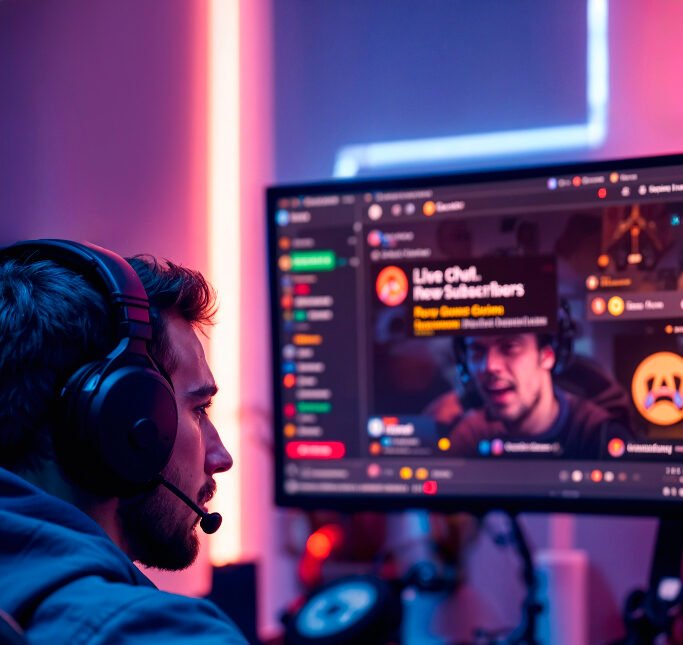Have you ever played a game and suddenly found yourself wondering, “What’s this location on the map? Why are the celebrating this festival? And what on earth does this character’s name even mean?” If so, you’ve just bumped into a fascinating layer of global game development—cultural differences.
When game developers set out to create a game for a specific region, the choices they make—from character names and storylines to festivals, environments, and even humor—are deeply influenced by that region’s culture. A game made for players in Asia, for example, will likely feature entirely different mythology, traditions, architecture, and societal values than one crafted for an American audience. And if you were to play both versions without adaptation, one of them might feel confusing or even alienating. That’s exactly where game localization steps in.
What Is Game Localization?
Game localization is the process of adapting a video game for different regions, languages, and cultures while preserving the game’s core identity and gameplay. It involves more than translating on-screen text—it also includes adjusting:
• Game narratives and dialogues
• Voiceovers and sound effects
• Cultural references and idioms
• User interfaces (UI) and tutorials
• Date, time, currency, and number formats
• Graphics, visuals, and legal compliance
Localization ensures players from different cultures can connect emotionally with the game, without feeling lost or alienated due to unfamiliar content.
Why Is Game Localization Important?
1. Player Immersion
A successful game pulls players into its world. If players stumble on awkward phrasing, untranslated lines, or culturally irrelevant jokes, the immersion breaks. Proper localization ensures characters speak naturally, jokes land as intended, and gameplay instructions are intuitive—regardless of language.2. Market Expansion With millions of players in countries like China, Japan, Germany, and Brazil, localized games can open doors to enormous user bases. Many players simply won’t play a game unless it’s available in their native language. Localization makes your title accessible—and desirable—to those audiences.
3. Revenue Growth
Research shows that localized games outperform their non- localized counterparts in foreign markets. For example, mobile games that support multiple languages often see higher downloads, engagement rates, and in-app purchases. For developers, localization isn’t a cost—it’s an investment with measurable ROI.
Translating Game Narratives
Maintaining Tone and Character Voice
Game scripts are often packed with personality, emotion, and backstory. Simply translating words can strip away those nuances. A good localization team works closely with the original script to retain character tone, speech patterns, and humor, adapting them to suit the target culture.
Example:• A sarcastic anti-hero in English might need a different tone or slang in Japanese to convey the same attitude without sounding awkward.
Adapting Idioms and Humor
Jokes and idiomatic expressions rarely translate directly. For instance, a pun based on English wordplay won’t work in Chinese. Localizers must find creative equivalents that deliver the same emotional or comedic impact.
Voiceover Localization (Dubbing/Subtitling)
Voice Casting and Direction
When a game is fully voiced, localizing it means finding voice actors in each language who match the original characters in tone, age, and personality. This ensures consistency in character portrayal across regions. Voice directors also play a critical role in guiding actors through lines with appropriate emotional delivery—especially in dramatic or cinematic scenes.
Lip-Syncing and Timing
For games with animated cutscenes or character close-ups, lip-syncing becomes important. Translations must be timed to match mouth movements, requiring careful script adaptationand sometimes shortening or lengthening dialogue to fit time constraints.
Subtitling for Multilingual Access
Subtitles are a cost-effective alternative to dubbing. They require precise translation and formatting to ensure readability and sync with on-screen dialogue. Subtitles are especially popular in indie games or markets with diverse linguistic preferences.
Localizing Cultural References
Games often include pop culture, mythology, food, festivals, or humor unique to the developer’s region. When brought to other markets, these references can fall flat—or worse, cause offense.
Examples of Cultural Adaptation:
• A Halloween-themed event might be replaced with a local celebration like Obon (Japan) or Día de los Muertos (Mexico).
• Visuals depicting religious symbols may be altered or removed in regions where they could be considered inappropriate.
Censorship and Regulatory Compliance
Each country has its own content regulations. In Germany, violent imagery is restricted; in China, skeletons and supernatural themes may be banned. Localization teams must modify or replace content to meet these legal and cultural expectations.
User Interface (UI) and UX Adjustments
UI localization goes beyond changing the language of menus. It includes:
• Text expansion (e.g., German phrases are often longer than English)
• Right-to-left language support (e.g., Arabic or Hebrew)
• Font and typographic compatibility (e.g., using localized fonts for Chinese or Korean characters)
• Control schemes and tutorials tailored to regional gaming preferences UI changes must maintain usability while feeling natural to the player. For example, Japanese players might prefer menu-heavy interfaces, while Western gamers may expect intuitive, minimalistic designs.
Challenges in Game Localization
String Management
Game text is often stored in dynamic strings, which appear in various gameplay contexts. Translators need to understand how these strings function, ensuring:
• Grammatical accuracy (even in gendered languages)
• Proper variable placement (e.g., “You have {x} coins” vs. “Tienes {x} monedas”)
• Context clarity to avoid awkward or incorrect phrases
Using Localization Management Systems (LMS) and tools like Translation Memory (TM) can streamline this process and ensure consistency.
Testing and QA
After localization, thorough LQA (Linguistic Quality Assurance) and functional testing are crucial. QA teams play the game in the target language to identify:
• Broken UI elements
• Mistranslations or typos
• Cultural inaccuracies
• Voiceover sync issues
Best Practices for Game Localization
1. Plan Localization Early
Integrate localization into the development cycle. It reduces rework, avoids code complications, and speeds up time-to-market.
2. Work with Native-Speaking Game Translators
Only translators who are gamers themselves will fully grasp genre-specific language, mechanics, and emotional tone.
3. Use Context-Rich Resources
Provide translators with gameplay videos, character bios, and concept art. The more context they have, the better the outcome.
4. Be Culturally Aware and Flexible
Expect to localize not just the text, but also art, marketing assets, monetization models, and support channels.
5. Test Extensively Before Launch
Don’t treat localization as “done” once translation ends.Playtesting with native users can reveal critical feedback before release.
Final ThoughtsIn
an industry where players crave rich, authentic, and emotionally engaging experiences, game localization is essential—not optional. It transforms your game from a regional success into a global sensation by bridging language gaps and cultural divides. With expert translation, culturally aware adaptation, and flawless integration, you give players everywhere the chance to truly connect with your world. Whether you’re an indie developer targeting new markets or a major studio releasing worldwide, investing in quality localization is your gateway to loyal fans, higher engagement, and lasting impact across the gaming landscape.
 AW HOLDING
AW HOLDING
 Tel: +971 24912220
Tel: +971 24912220
 sales@awprotranslations.com
sales@awprotranslations.com




